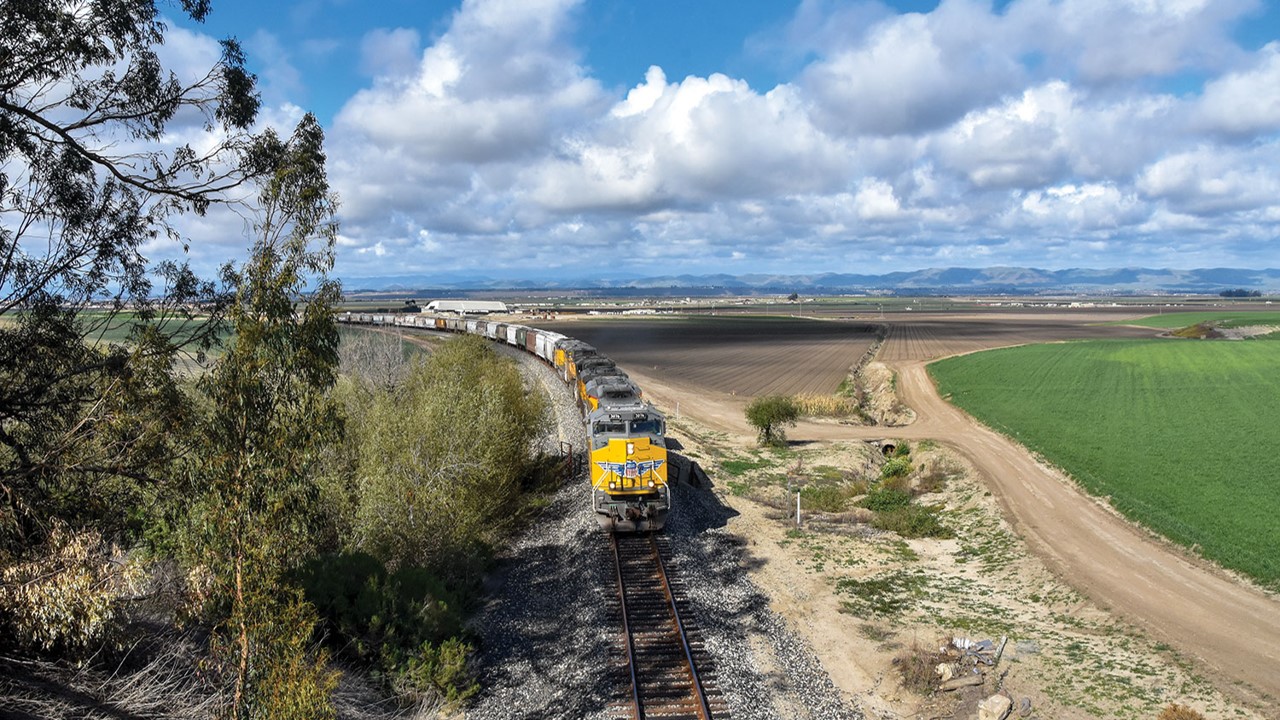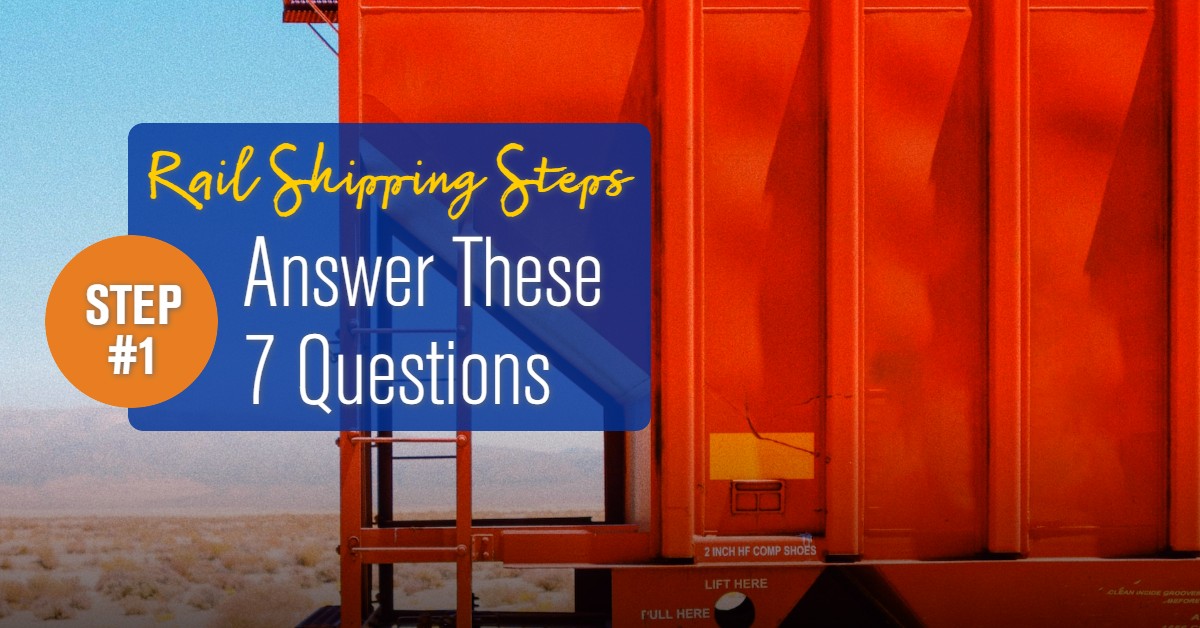People ship freight by rail for its shipping cost, volume, and environmental benefits, but oftentimes freight shippers who are new to rail aren’t sure where to begin.
Our “Rail Shipping Steps” series is here to make it easier to get started with rail shipping.
In this first installment, we’re covering the very first step: gathering the right information about your shipment(s) to begin the shipping process. It’s as simple as answering these seven questions.
What are you shipping?
Trains can haul just about anything on railroad tracks, from materials mined from the earth to finished vehicles and consumer goods. The only things freight railroads don’t ship are personal property (your car, items in your home), passengers, pets and other living things.
Railroads will want to know what you plan to ship so they can identify the right rail car type for the job and connect you with a representative who specializes in your industry.
The general categories for products typically shipped by rail include:
- Aggregates, cement & fly ash
- Auto parts and vehicles (but not personal vehicles)
- Coal
- Fertilizer
- Food & beverage
- Grain products
- Industrial chemicals
- Intermodal containers & trailers
- LPG & petroleum
- Lumber and paper products
- Machinery, minerals & waste
- Metals & ores
- Plastics
- Renewable diesel
- Soda ash
- Wind turbines & biomass
If the freight you want to ship isn’t listed, that doesn’t mean trains can’t handle it. Freight railroads and their shipment quality teams can find a solution for just about anything (just not personal property, people, pets or other living things).
How much are you shipping?
Railroads will need to understand the amount of product you’re shipping and the weight of that product. If you’re unsure, it’s okay to start with an estimate. Typically, railroads will ask for the amount in tons, pounds, gallons, or board feet, depending on what kind of freight you’re shipping by rail.
Knowing the quantity of your freight shipment will help the railroad provide an accurate rail shipping quote and make sure resources are available to handle your shipment(s).
- Tip: In the rail industry, the amount or quantity of product you’re shipping is referred to as the “volume” of your freight shipment.
Where are you shipping from? Where are you shipping to?
Answering these questions will help the railroad understand the length of the trip and whether one railroad can handle the entire shipment or if other rail carriers should be involved.
You don’t have to provide an exact address; providing the city and state is enough information to get started.
- Tip: Oftentimes railroads call the beginning and end points of a shipment the “O/D pair,” where “O/D” stands for the origin and destination of the shipment.
Are there railroads tracks at the shipment origin and destination facilities?
If the origin or destination is not rail served, it’s not a dealbreaker. Railroads work with logistics partners that design transloading solutions to give shippers access to rail shipping, even if there aren’t train tracks at one or both ends of the shipment. If you’re not sure if the origin or destination have railroad tracks, that’s okay; the railroad you’re working with can find out for you.
Don’t forget that building tracks leading to your facility is also an option.
- Tip: Learn about three ways to access the railroad network, then learn more about connecting your business to rail.
Does the freight you’re shipping have any special requirements?
Freight railroads can accommodate most shipments with special requirements, but you’ll want to indicate what they are up front so there are no surprises down the road. Examples of special requirements can include:
- Freight that is exceptionally tall, wide, long or heavy
- Fragile products and materials.
- Products that can spoil and/or require a specific shipping temperature.
- Hazardous materials
Tip: Freight that is very large or heavy is referred to as “oversized freight” or a “dimensional load”).
How often do you plan to ship?
How often do you need freight picked up and/or delivered? Railroads will need to know your shipping frequency, such as if you plan to ship annually, monthly, weekly, or daily.
- Tip: Railroads can still handle your freight shipments if your shipping pattern isn’t consistent.

When do you want to start shipping?
Sharing your desired timeline is helpful for railroads to know, because it allows them to align the proper resources for your shipment(s).
- Tip: It may take some time to set up your first rail shipment, but transloading can sometimes help you get started sooner.
Ready to find out how much rail shipping costs?
Now that you’ve answered these questions about your shipment, you have everything you need to get a rail shipping quote. If you’d like to learn more about rail shipping first, get answers to frequently asked questions about shipping freight by rail.
Related Articles
- Shipping by Rail 101: FAQs Answered
- What Can You Ship by Rail?
- The Top Railroad Terms and Their Definitions: Beginner’s Edition
- Intermodal vs. Transloading
- What Is Transloading & How Does It Expand Freight Shipping Options?
- Quiz: Is Rail the Right Fit for Your Shipments?
- Inside Look: How Transloading Works
- How Railroads Prevent Derailments: Railroad Safety Technology
- Pros & Cons of Freight Shipping Modes: Truck, Rail, Water & Air Compared
- Telematics and the Railroad: The Future of Shipment Visibility
- How to Use Carbon Calculators to Reduce Transportation Emissions
- Freight Shipping and Its Impact on Climate Change









